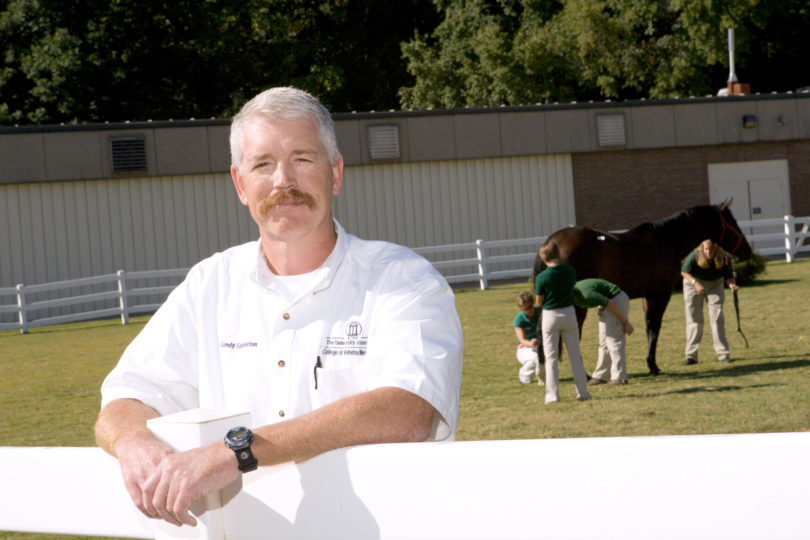As a member of the faculty of the College of Veterinary Medicine, Randy Eggleston is in a unique position to promote service and learning. The mild-mannered veterinarian, one of only two clinical track faculty members on staff at the Large Animal Teaching Hospital, devotes his time primarily to teaching and service. However, the native Kansan has initiated cutting-edge therapy involving stem cells that may change how horses are treated for lameness.
In the course of a year, Eggleston treats up to 75-100 horses for leg ailments, including ligament injuries and laminitis, a crippling disease affecting the delicate junction between the hoof and bone in the horse’s foot.
“Because of the tremendous weight put on their long legs,” said Eggleston, “horses are naturally fragile creatures. Leg injuries are extremely common in the equine species. In addition, horses are prone to colic, a gastrointestinal disorder that, if left untreated, could affect blood circulation and cause laminitis.”
Eggleston came from a private equine practice in Hot Springs, Ark. Following his residency, he was hired as a full-time clinical track faculty member at UGA in 2002. Since then he has cultivated relationships with area horse owners who rely on him and the rest of the large animal teaching staff to care for their animals.
“Forty-five to 50 horses have been donated by private individuals to the equestrian team, and many come with lameness problems,” said Eggleston. He is at the beginning of ground breaking clinical trials to help horses with lameness. Before modern veterinary medicine, a horse with a leg injury might be put down because there was no way to prevent the injury from progressing. But this ill-fated destiny may soon become a thing of the past.
As part of the trial, Eggleston retrieves fat from a healthy area on the injured horse’s body and sends the tissue to a company that extracts the stem cells. He then injects the stem cells into the damaged tissue and assesses for results.
“The injected stem cells attach themselves to the bad tissue and multiply, promoting faster healing time and stronger ligaments,” he explained. “So far we have a mixed results. We usually know within three months if it’s worked.”
Eggleston has found this method works in both joints and ligaments, which is good news. Horses that may have been put down can possibly have a second chance.
“It just depends on the horse. It’s not a cure-all, but it is a move in the right direction,” he said.








